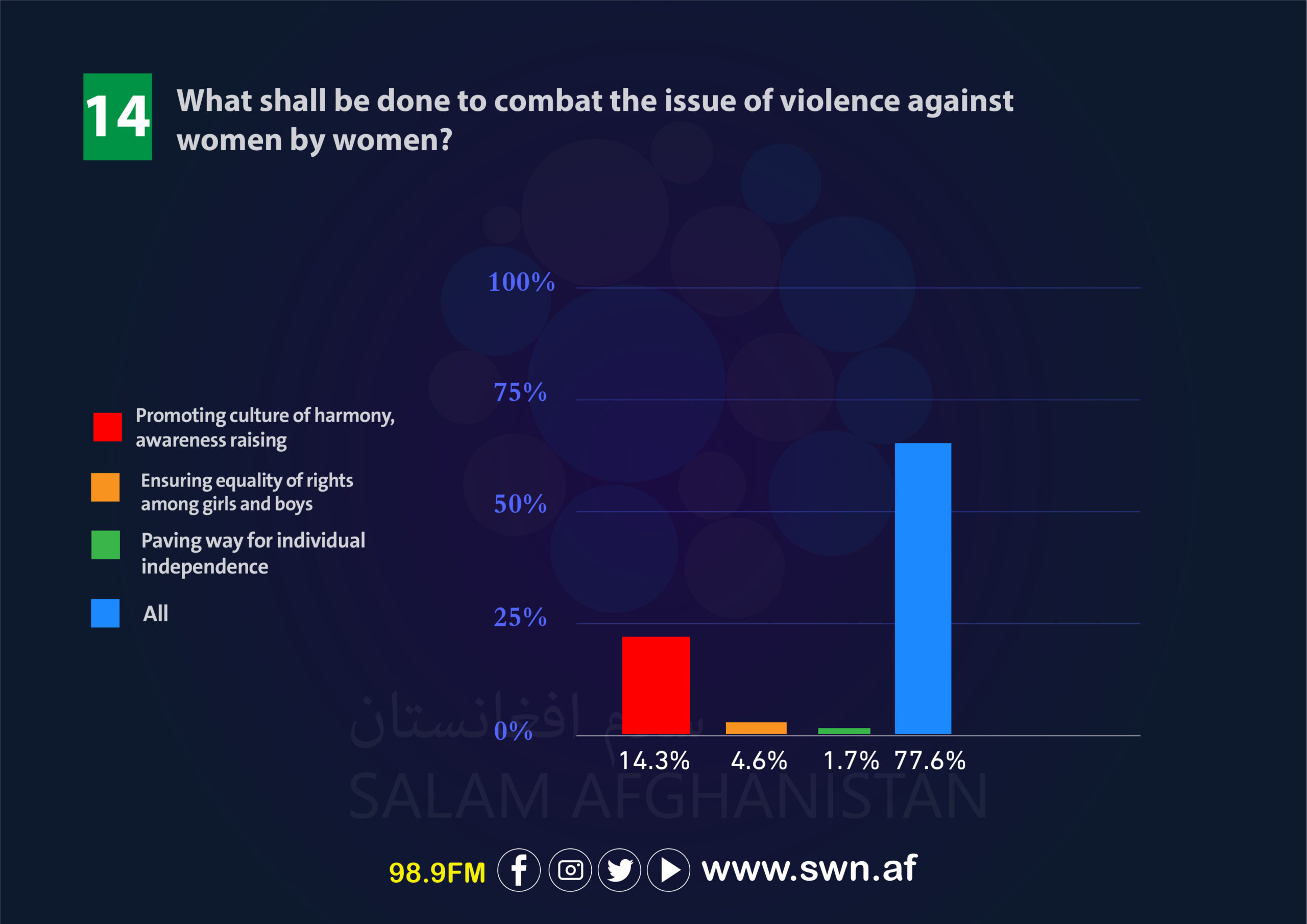Defining violence against women
Violence against women is a term in which men are generally known as the perpetrators, and based on the definition of this phenomenon by the United Nations, any gender-based action that threatens the safety and health of women physically, sexually, and psychologically, is violence. However, as it seems, violence against women is not only caused by men, and this phenomenon includes wider dimensions such as the imposition of force and violence by women against women.
Context of the situation
The examination of cases of violence against women in a traditional and closed society like Afghanistan poses significant challenges and limitations. The multi-layered nature of violence against women, coupled with its diverse forms, complicates the analysis of this issue. However, the ambiguity increases when cases of violence against women caused by women are surveyed and researched.
In this survey, our primary focus is to delve into the often-overlooked realm of violence against women, an issue predominantly explored through the lens of male perpetrators. However, the survey’s inquiry extends to the pervasive yet underexplored facet of women inflicting violence on their counterparts.
This research endeavors to answer a pivotal question: to what extent have interviewed women been victims of violence perpetrated by women? The survey’s inquiry seeks to unravel the methods and nature of this often-unaddressed facet of violence.
Main questions
- How many of the interviewed women in the research have been subjected to violence by the same gender (female)?
- What has been the method of the inflicted violence?
- What has been the sort of inflicted violence?
- Who has been the perpetrators of the violence?
Research background
While discussions on men’s violence against women dominate, women’s violence against women has been addressed less. This research brings attention to the often-neglected aspect of women’s violence against women, covering recent years. It reveals a gap in statistical analysis during this period, emphasizing the need for consideration and understanding of this complex issue. It is worth noticing that there is no credible date available to be considered to gauge the level of violence in the period taken into consideration for this survey. For this reason, the worth of this research is unfolds as it covers the neglected yet vital aspects of the issue.
Research objectives
- Examining the different layers of the phenomenon of violence among women;
- Establishing the violence of women against women and examining its factors and reasons
- Presenting statistics of women who have been subjected to violence by women;
- Examining and explaining the causes and contexts of women’s violence against women
- Proposals to combat the women’s violence against women
Research period
This research was prepared in at least six week between November 26, 2023 and January 8, 2024.
Analysis method
Due to the quantitative nature of this research, the data was analyzed and checked using the SPSS program.
Research challenges
Carrying out any research work to examine a basic issue related to women in Afghan society is a difficult task and full of challenges; especially the issue of women’s violence against women, and this research has also faced many and various challenges. Therefore, we will limit ourselves to processing a few prominent cases. Considering these issues, the challenges we faced during this research will be mentioned as well.
- Most of the interviewed women in this survey did not fully understand the nature of violence and did not know if they were subjected to violence or not because these women consider tolerance of violence and the existence of it to be a part of their normal lives.
- Most women in Afghanistan are not willing to talk about their family violence due to the traditional family structure; therefore, the interviewed women in this survey simply did not agree to talk on record.
- Interviewing women for interviews was one of the other difficulties of this research because most of the women’s educational and work centers are closed.
Research variables
Women, violence, illiteracy, social traditions and forced marriage are the variables of the research.
Executive summary
Violence against women is a specialized term in which men are generally known as the perpetrators, and based on the definition of the United Nations, any gender-based action that threatens the safety and health of women physically, sexually, and psychologically, is violence. However, as it seems, violence against women is not only caused by men, and this phenomenon includes wider dimensions such as the imposition of force and violence by women against women.
This survey has been conducted in 26 provinces; Kabul has the highest number of respondents with 44% of participants, and Kunar, Zabul, Nangarhar, and Panjshir provinces have the lowest number of participants with 0.2%.
84% of the participants in this survey are women and girls who have experienced violence from the same gender (female), and the remaining 16% said that they have never experienced violence by any woman.
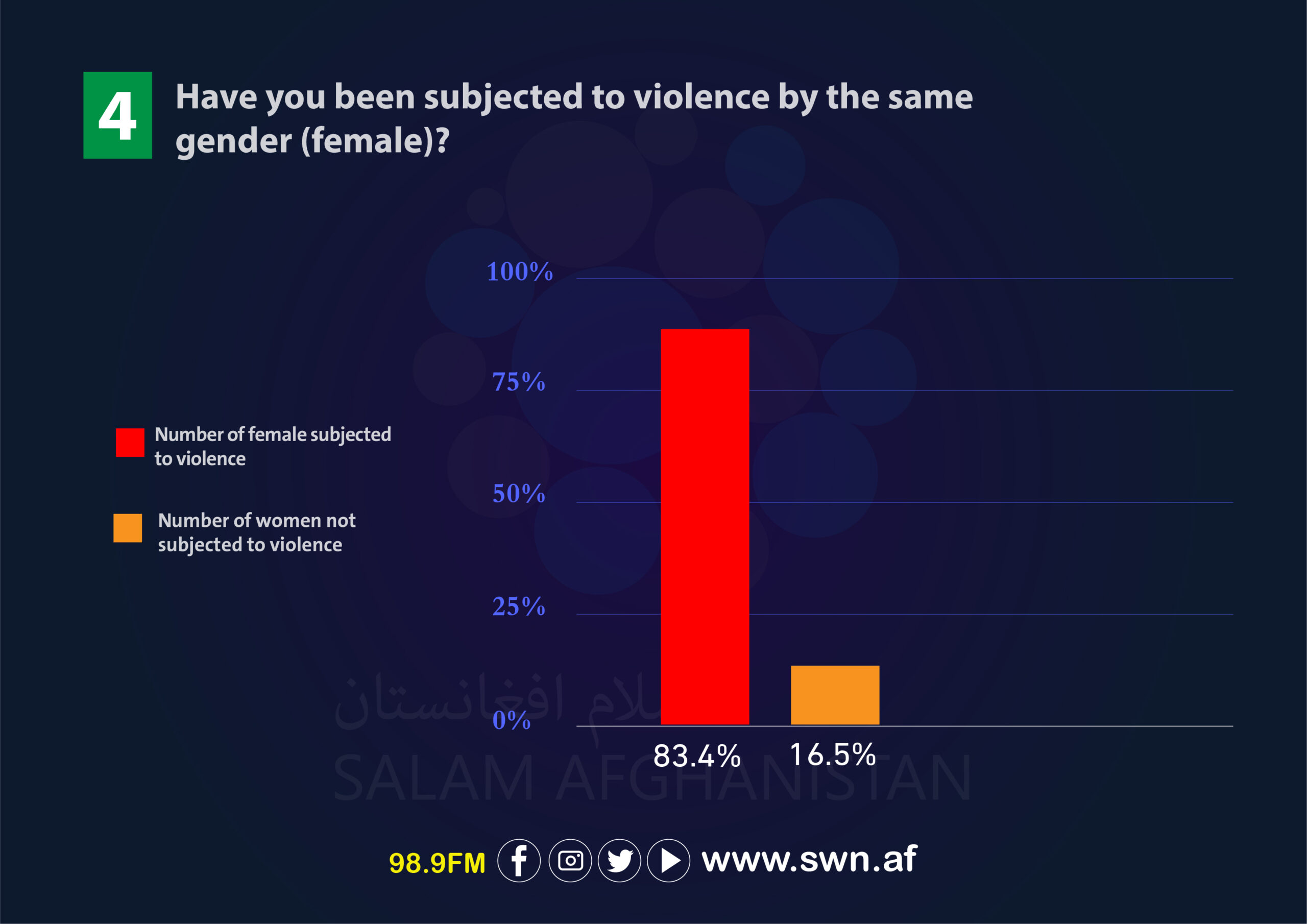
Of the total number of those who said in this survey that they have experienced violence inflicted by the same gender (female), 91.2% have faced psychological violence, 4.3% with physical violence, and another 4.3% have faced both types of violence (physical and psychological).
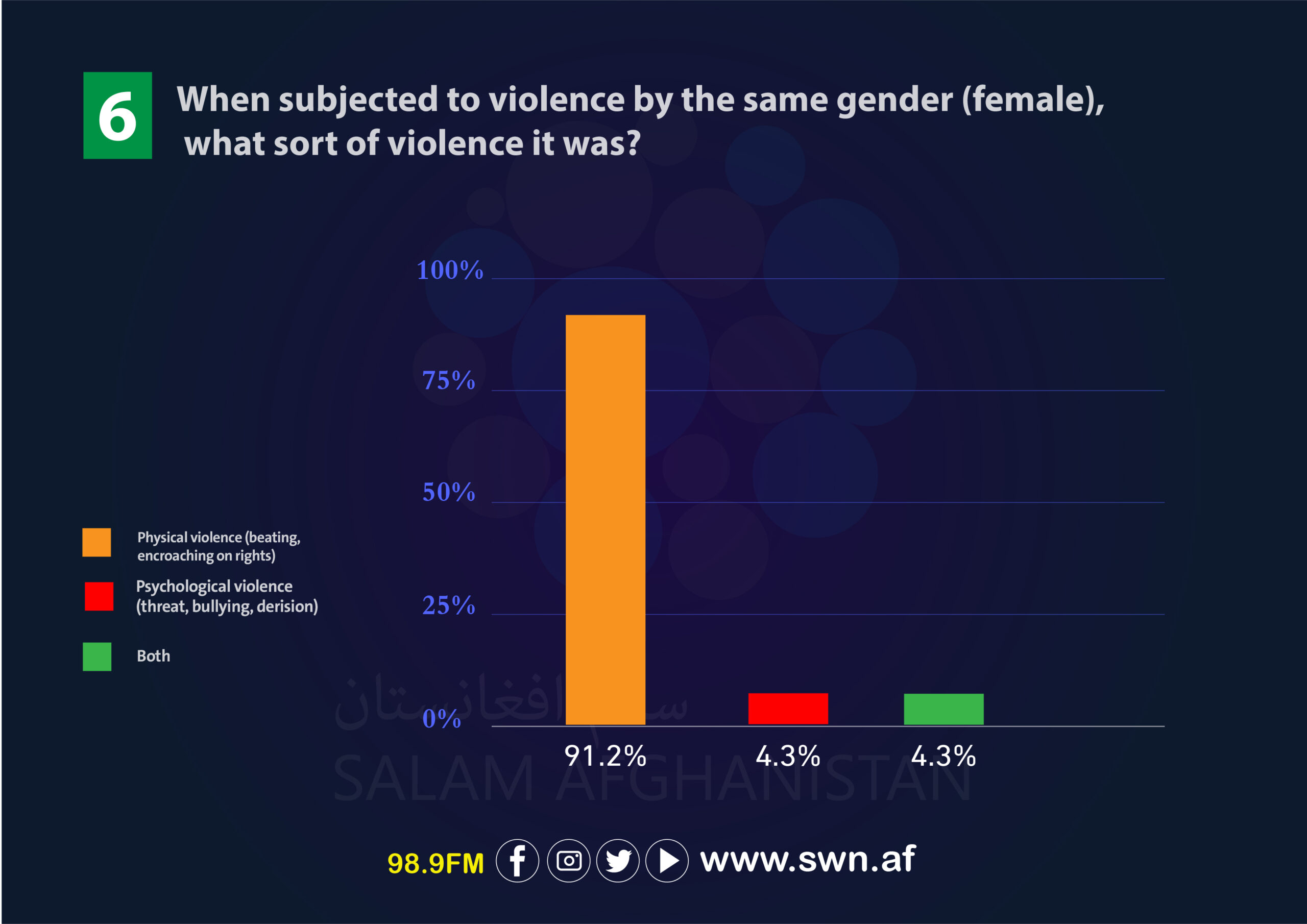
53% of women, who faced violence from their same gender, said that it was mostly at home and another 47% said that they experienced violence from their same sex outside the home. 42% of those who have faced violence at home said that they suffered this violence at their father’s home; while another 58% said that after starting their married life in their husband’s home, they were subjected to mental and physical violence.
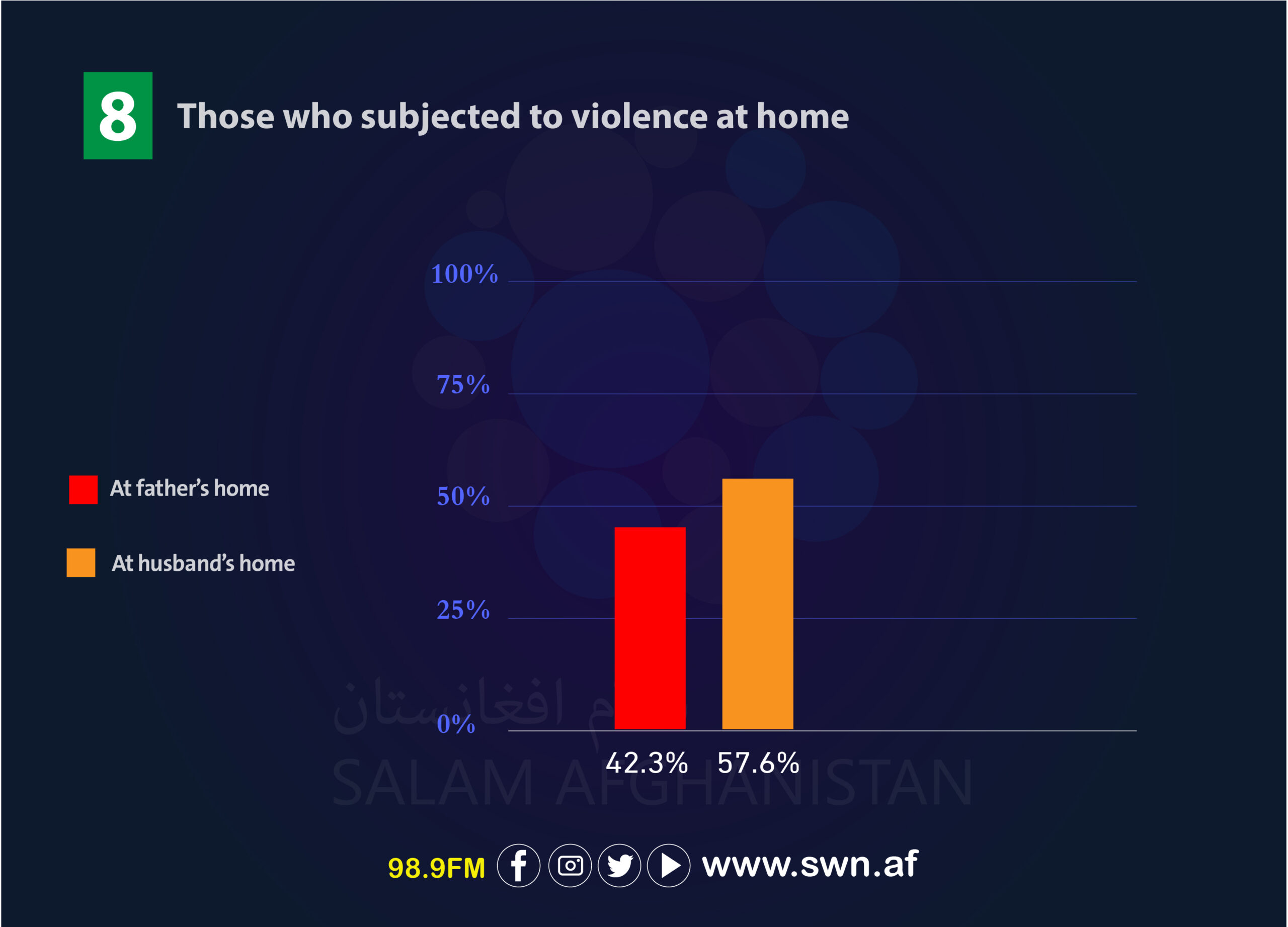
According to the data, aunt (father’s sister) and sister-in-law (brother’s wife) were the most perpetrators of violence in the father’s house, mother-in-law and sister-in-law (husband’s sister) were the most perpetrators of violence in the husband’s family.
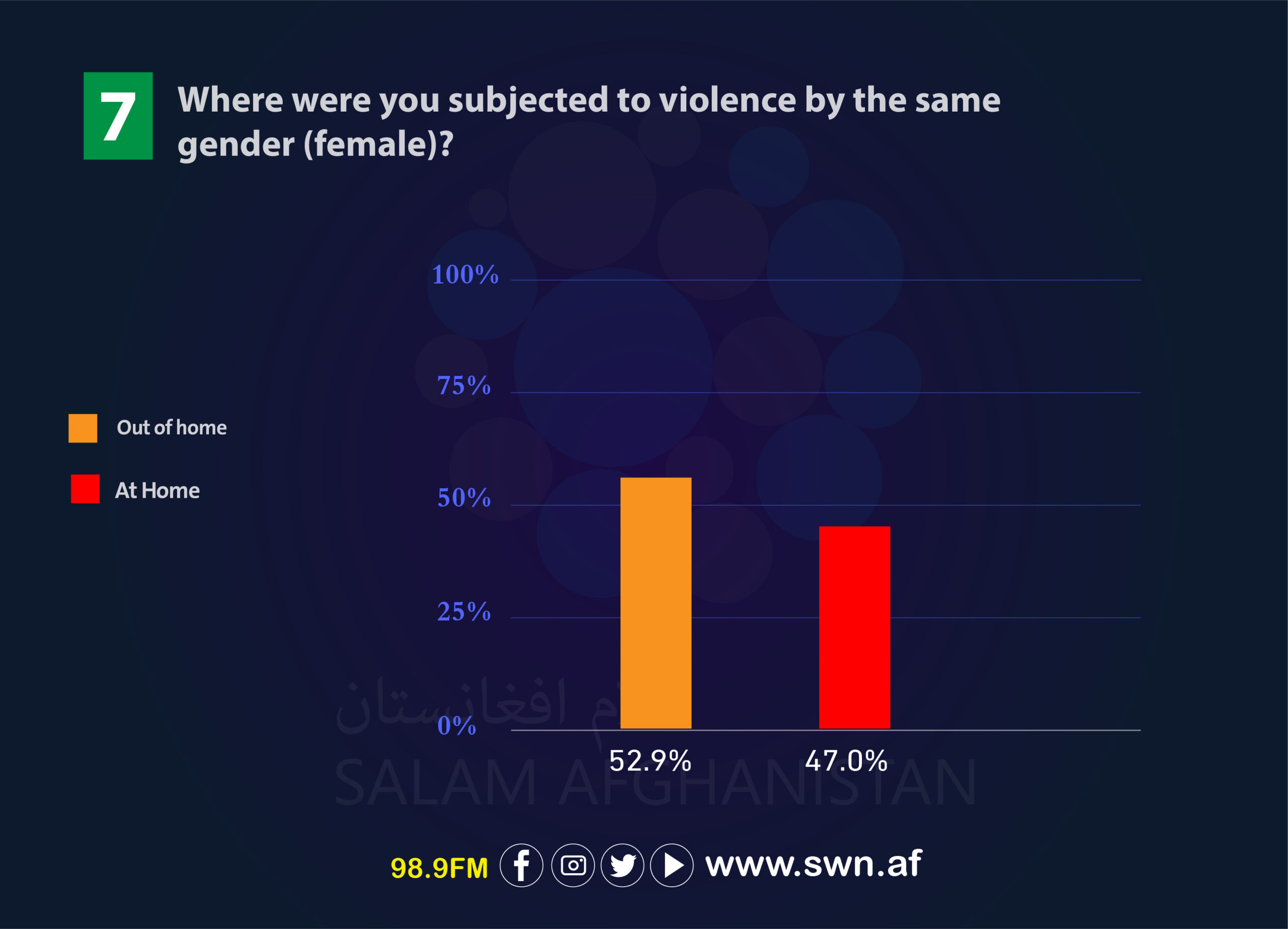
In addition, according to this survey, colleagues and supervisors are also known as the cause of women’s violence against women outside the home.
The reasons for women’s violence against women have also been examined in the survey, and most of the respondents mentioned jealousy and unhealthy social competition as the main reasons for women’s violence against women.
Detailed Report
Salam Watandar launched a survey in 26 provinces of Afghanistan to examine the extent, nature, factors, and reasons for women inflicting violence against women, to which 412 women responded. In this survey, Kabul has the highest number of respondents with 44% and Kunar, Zabul, Nangarhar, and Panjshir provinces have the lowest number of participants with 0.2%.
54.9% of the respondents in this survey have been between 15-25 years old; 26.2% of respondents have been between 25-30 years old; 8.7% of respondents have been between 30 and 40 years old, and 10.2% of respondents in this survey have been over 40 years old.
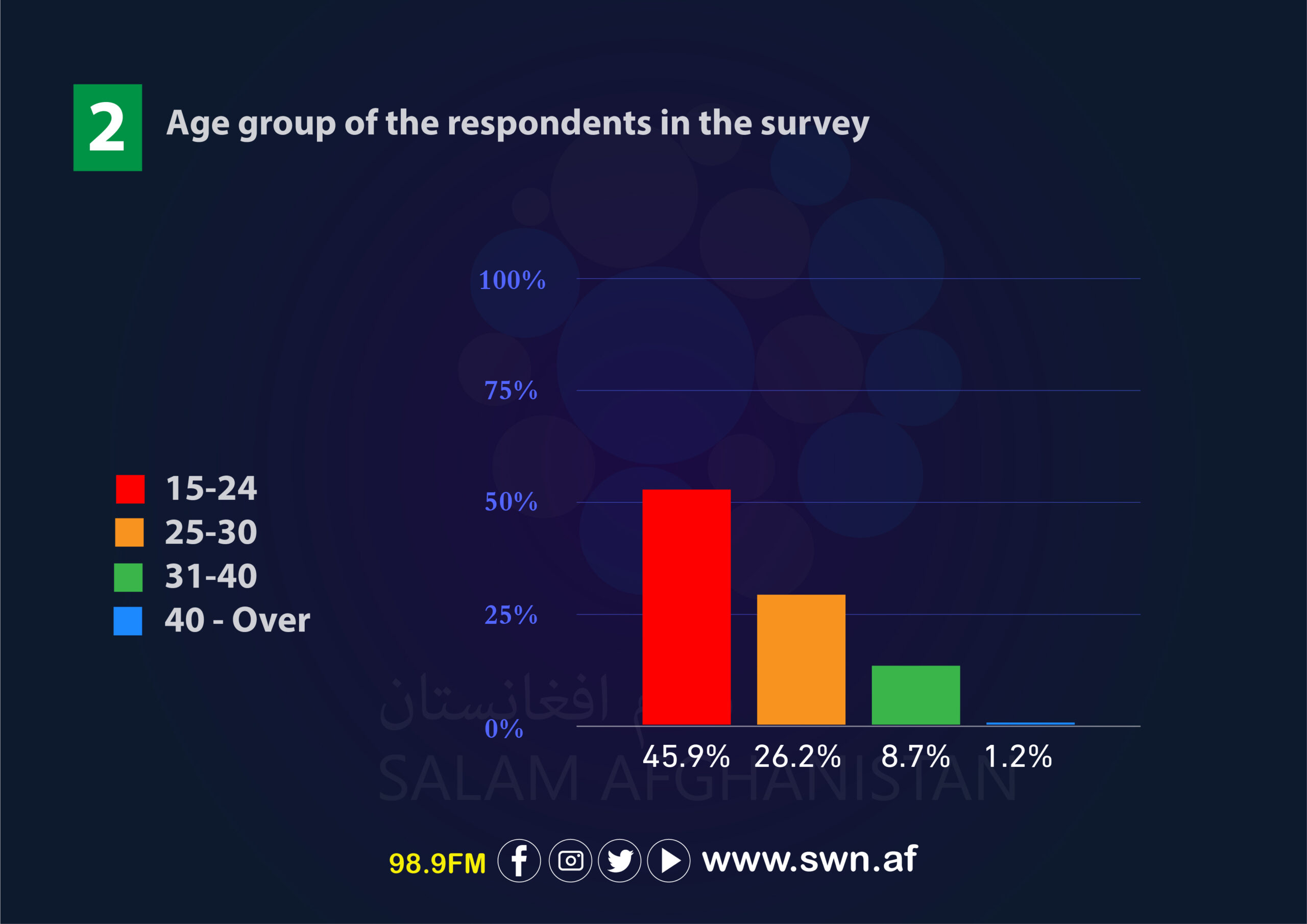
59% of participants have been single women and 41% have been married.
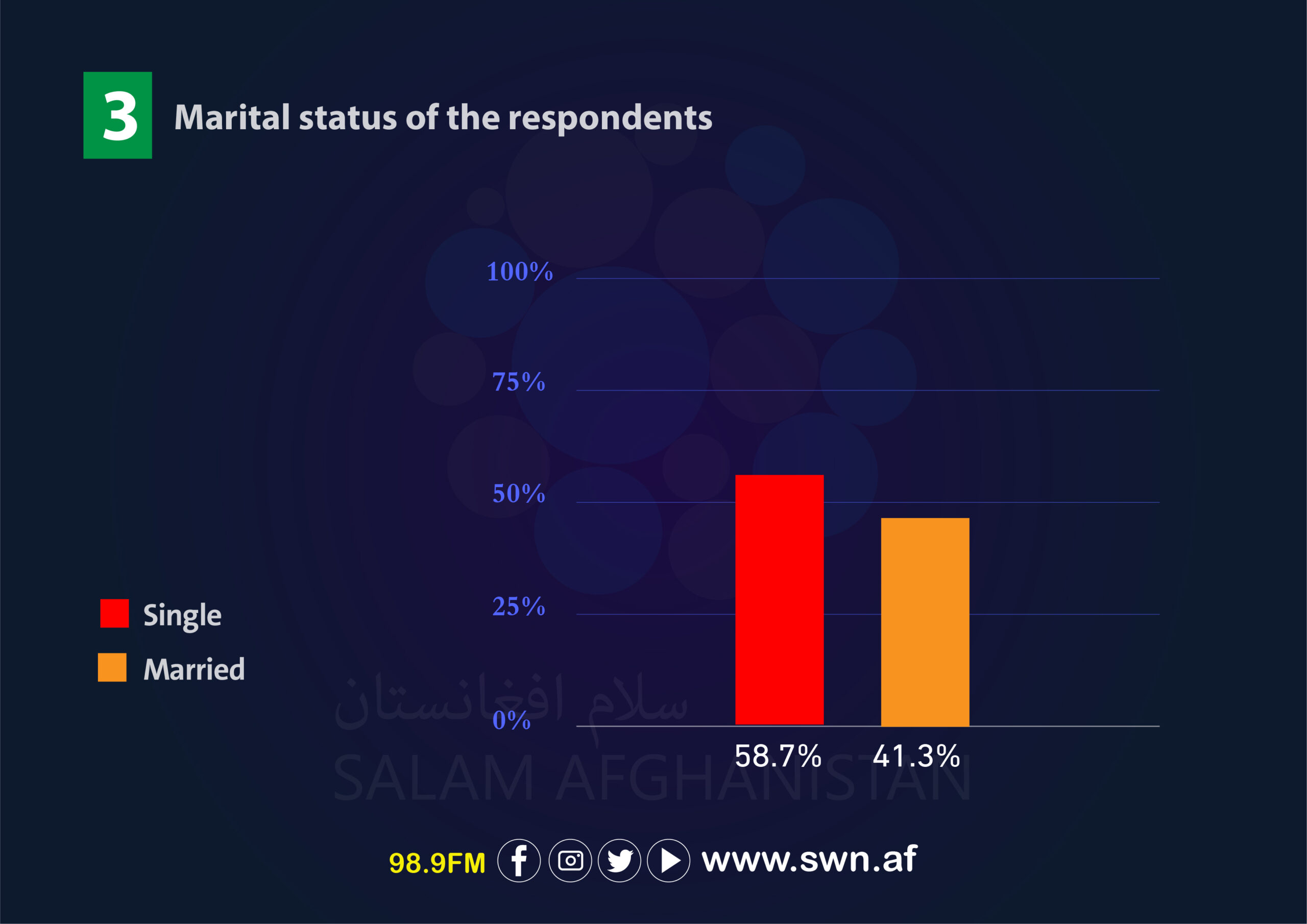
84% of the participants in this survey said that they have been subjected to violence by the same gender (female); however, another 16% said that they have not suffered from any violence from the same gender.
Among women who have experienced violence from the same gender (female), 28% described the violence as very high, 19% considered it high, while the majority, comprising 53%, characterized it as low.
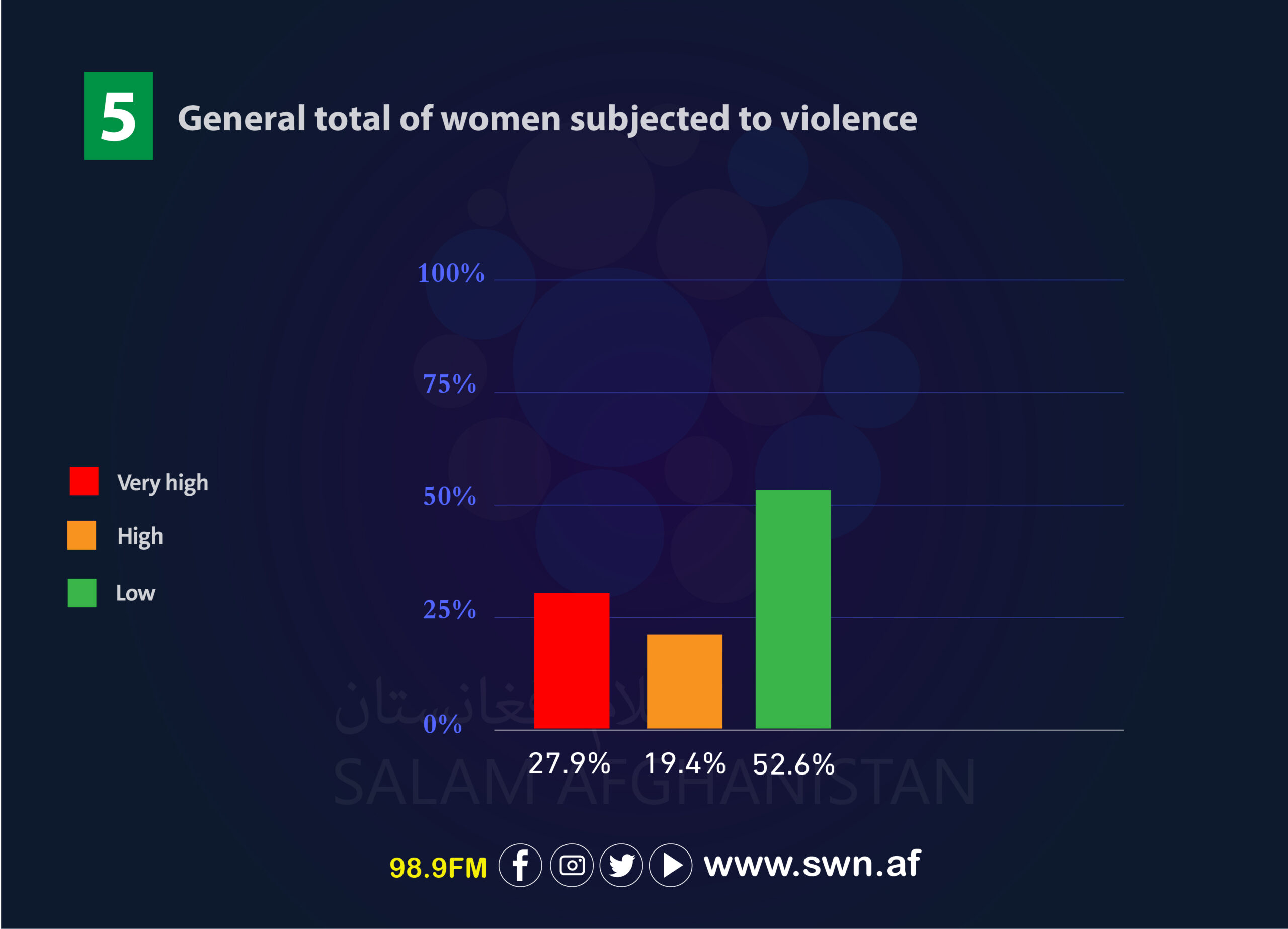
Among the women surveyed who have experienced violence from the same gender, 91.2% reported encountering psychological violence, 4.3% faced physical violence, and an additional 4.3% experienced both physical and psychological violence simultaneously.
The environment in which women have faced violence from women has also been examined in this survey. It noted that out of the total number of women who have faced violence, 53% said that they have experienced violence at home and 47% said that they have experienced violence outside the house. 42% of those who have faced violence at home said that it was at their father’s house and another 58% said that they were subjected to mental and physical violence at their husband’s house after starting married life.
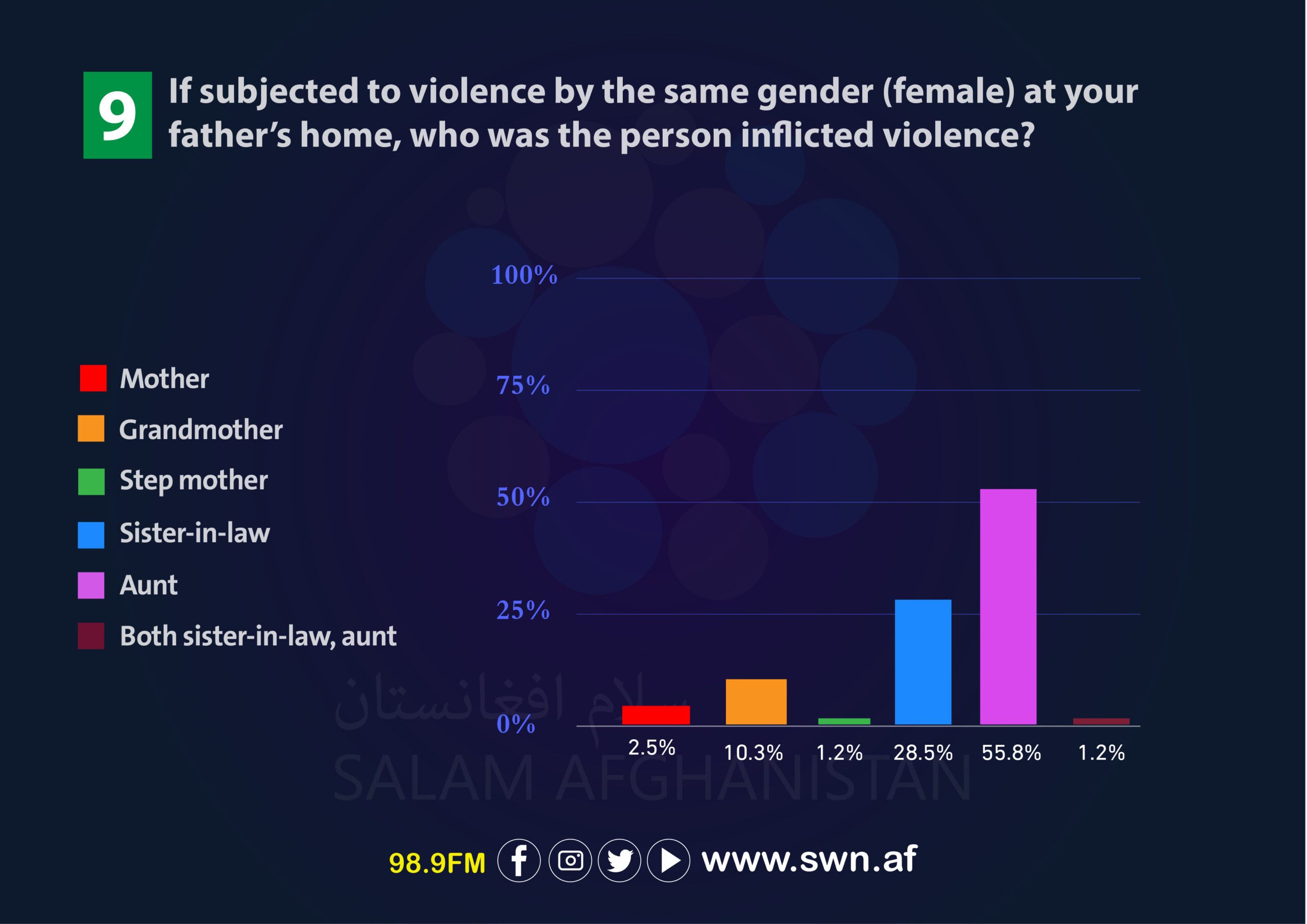
According to the data obtained from the answers of women and girls who have faced violence in the father’s house, aunt (father’s sister), brother’s wife, grandmother, mother and stepmother perpetrated 55.8%, 28.5%, 10.3%, 2.5% and 1.2% of the violence while another 1.2% of the victims said that all of the mentioned people were the cause of violence against them.
Also, among the women who have faced violence in their husband’s house and responded in this survey, 83.8% blamed sister-in-law (husband’s sister) as the cause of violence, 15.2 % blamed wife of the brother-in-law while and one percent blamed the second wife as the cause of violence against them.
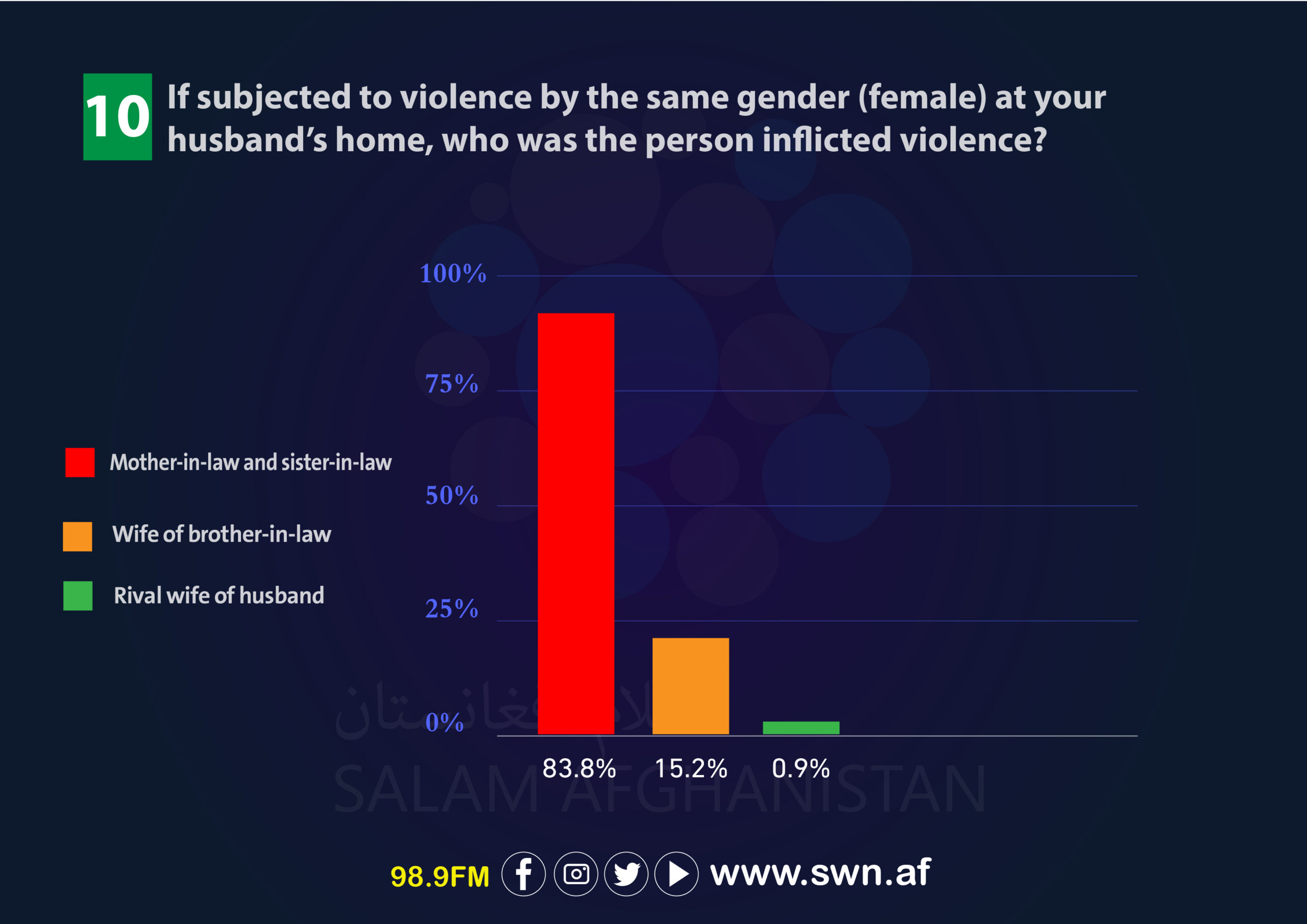
At the workplace, 26.5% instances of violence were reported in educational places and 14.1% while commuting. Among these women and girls, 55.2% said the perpetrators were colleagues, 8% said they were supervisors, 11.7% said they were teachers, 17.2% said they were friends and classmates, and 7.4% said all of the mentioned people are causes of violence against them.
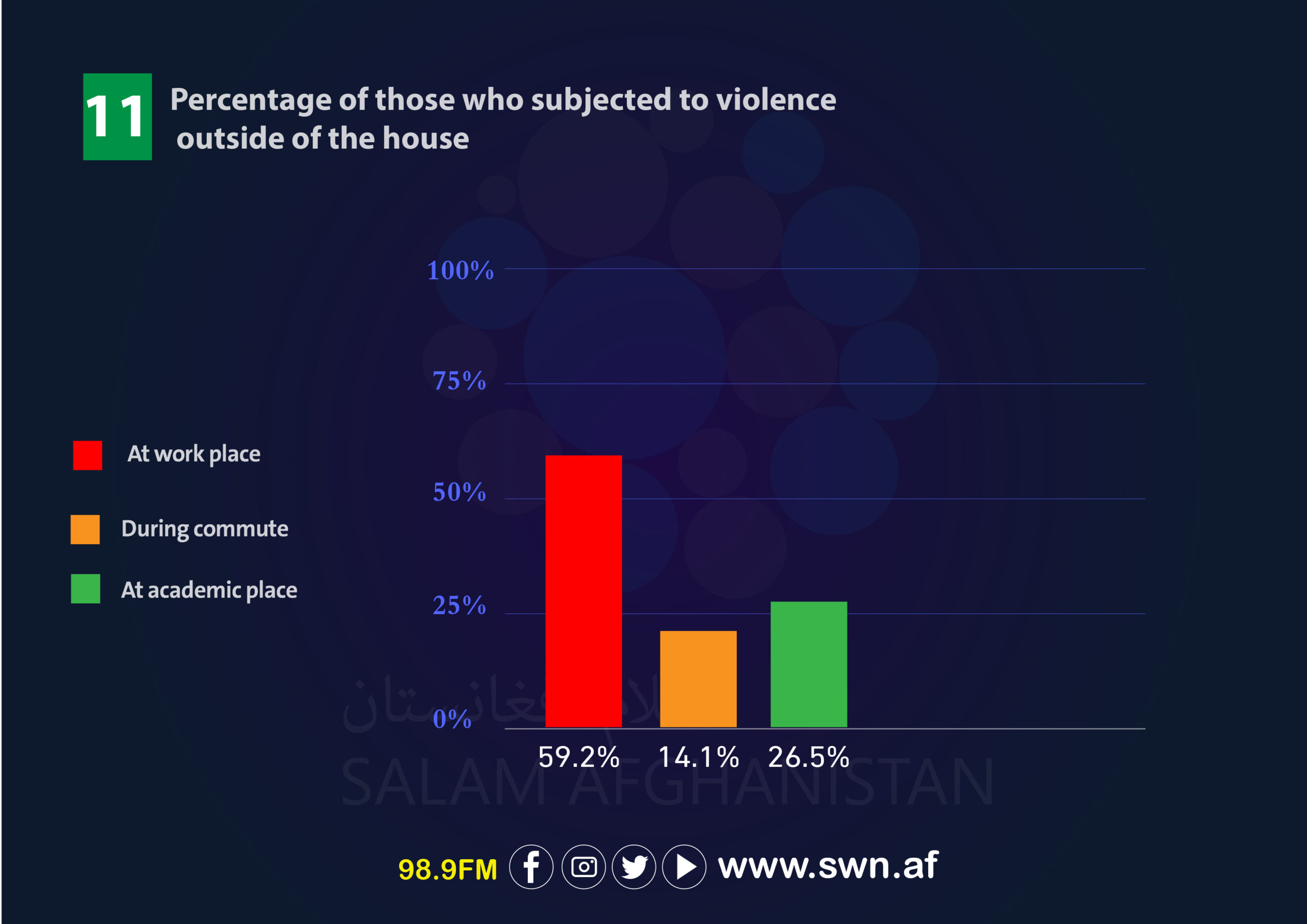
In this survey, it was checked that 25% of the participants blamed venomous and unhealthy social competition, 4% blamed patriarchal culture and inequality, and another 1.7% said lack of knowledge about the rights and illiteracy, and another 69.4% said all of the above, including lack of knowledge from childhood , forced marriages, mental health issues and lack of individual independence as the reasons for violence against women.
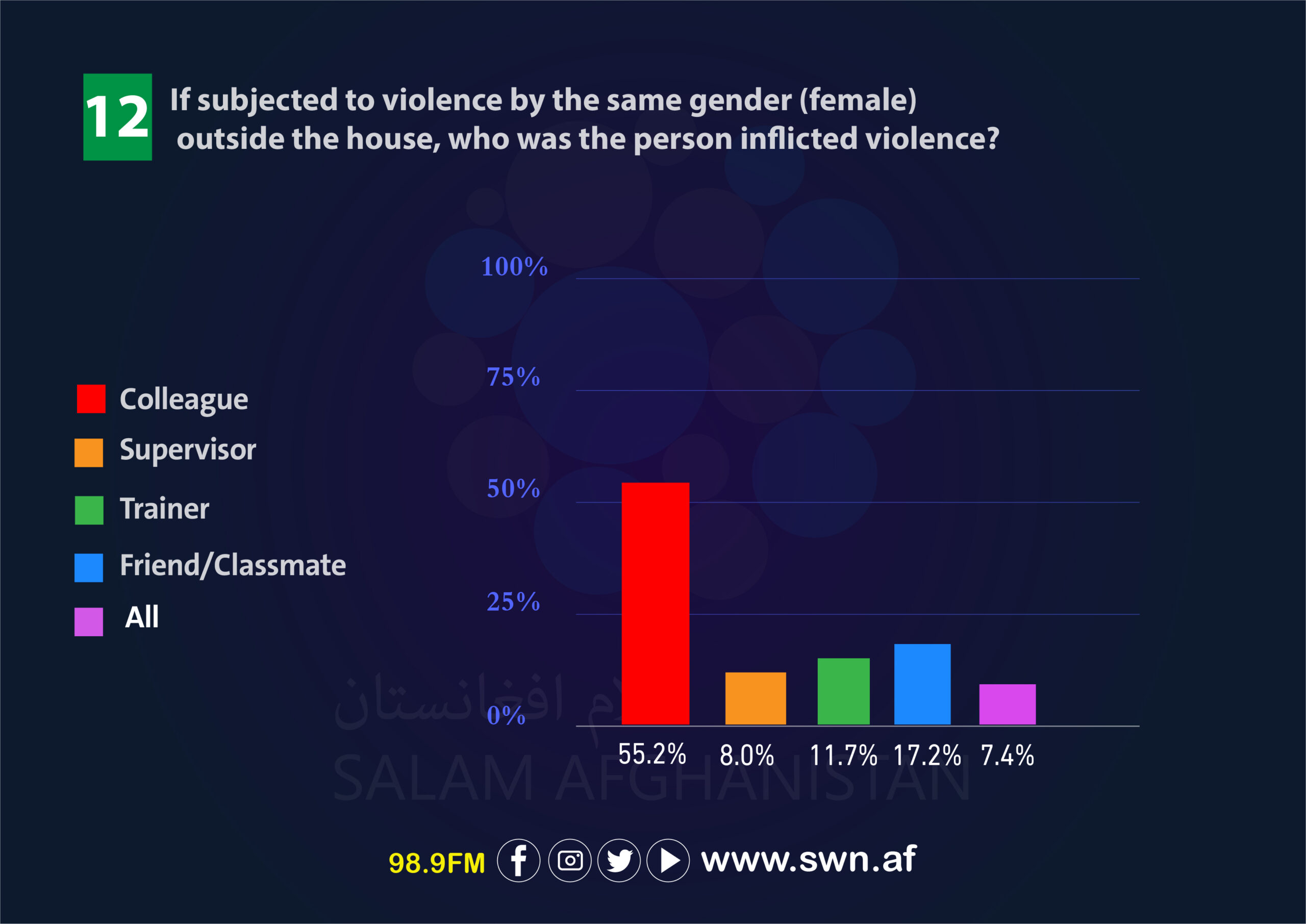
Also, in the survey about solutions to solve the problem of violence against women in Afghanistan, some 14.3% noted that awareness and cultural evolution, 4.6% mentioned gender justice as a way out. For gender equality, 3.3 percent called for the promotion of individual independence and another 77.6 percent said that the implementation of all the above solutions can be effective in solving the problem of violence against women in Afghanistan.
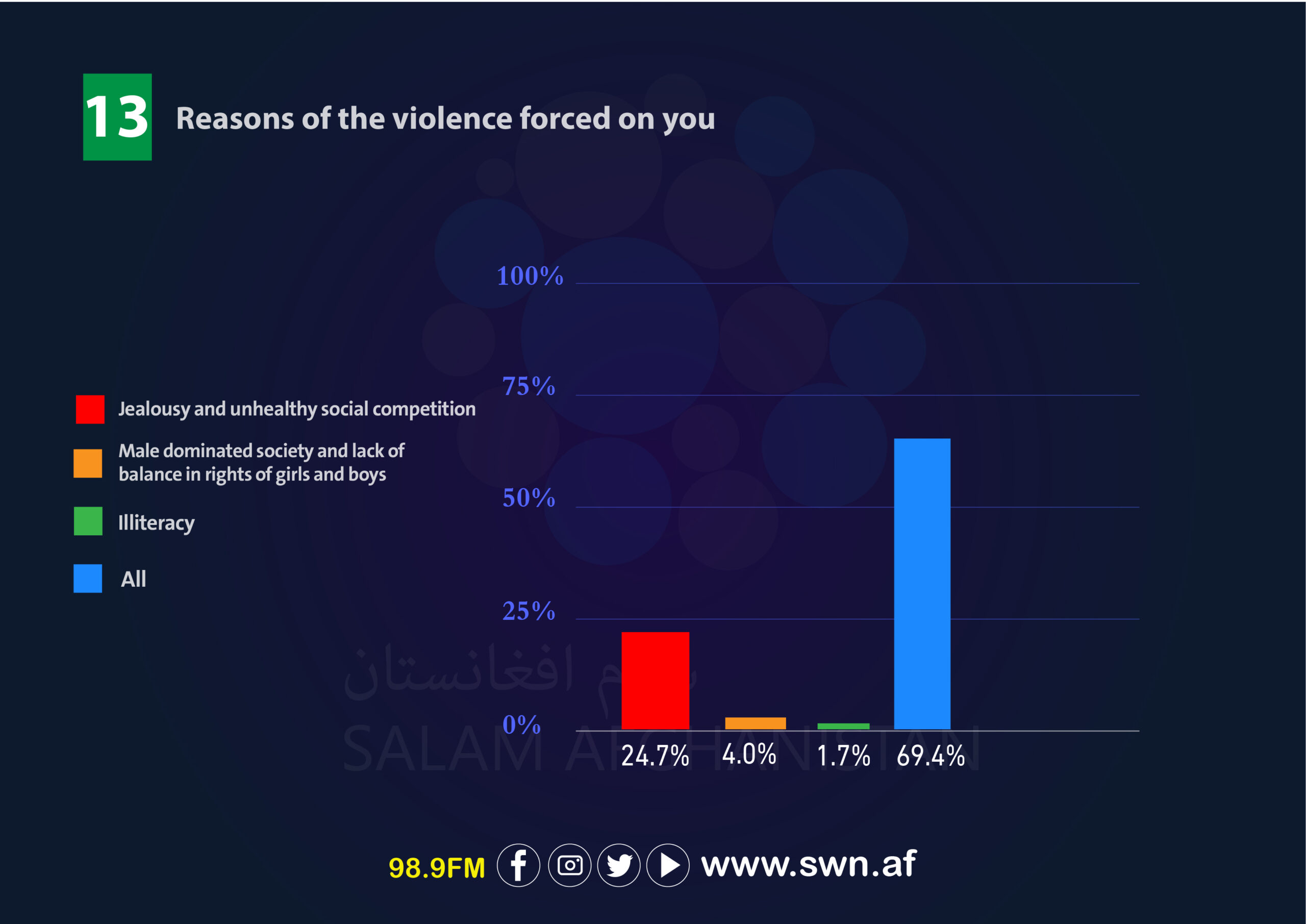
Recommendations:
For the eradication of violence against women, the study found that government and all citizens have a social responsibility to work together. However, more specifically, since less attention has been paid to the problem of violence against women inflicted by women in the Afghan society, at the end, suggestions have been made to address this aspect as well.
- There is a need to have a law prohibiting violence in society and to implement it seriously.
- Individual freedome and independence should be foreseen in the laws of the country and all members of the society should be required to ensure it.
- The independent life of husband and wife from their families should be protected as per the laws and its implementation should be done seriously.
- Members of the society should be educated and enlightened.
- The media, imams of mosques, teachers and other institutions and people who can convey messages in society should encourage and inform others for reducing violence.
- Since the problem of violence against women by women has not been researched before, it is necessary to do more research on the hidden aspects of this type of violence and then provide more solutions for it in the society.
